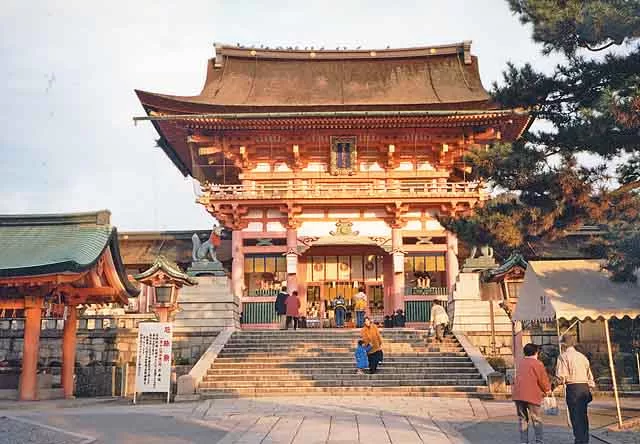Taue-sai Rice Planting Festival in Kyoto Celebrates Traditional Agricultural Rituals

The Taue Rice Planting Festival in Fushimi Inari Shrine
Every year, as the season of rice cultivation begins, the sacred precincts of the Fushimi Inari Shrine in Kyoto become a hub of activity. An important annual event, the Taue Rice Planting Festival (Taue-sai), takes place on June 10th, transforming the serene ambiance of the shrine into a cultural spectacle.
Fushimi-Inari-Taisha Shrine is renowned for being a place that honors Inari, the god of rice harvest and commerce. The Taue-sai festival involves a ritual planting of rice, an activity aimed at ensuring a bountiful harvest. It’s one of the most awaited Kyoto events in June.
The Importance of Rice Cultivation
Rice, often considered the humble plant, has played an instrumental role in Japan’s evolution. The importance extends beyond merely being an agricultural commodity. It holds religious significance as offerings to gods and is crucial to Japan’s traditional festivals and rituals.
The sacred ritual not only showcases Japan’s age-old traditions but also gives visitors an insight into why rice cultivation plays a pivotal role in Japanese culture.

A Rich Tradition: Culture and Prayers for Harvest
Keeping alive centuries-old traditions, locals gather at Fushimi Inari Shrine to plant seedlings that grew in its sacred seedling bed. The act is believed to provide blessings for a rich harvest in the coming year.
The festivities kick off at 13:00, with women dressed in Heian-court costumes performing traditional dances. An hour later, these women clad now in traditional farmer’s attire proceed to plant rice in the sacred field.
Simultaneously aligning with agricultural practices across Japan, seeds are grown during spring before transporting young plants into fields during summer. Similarly treated are seeds turned seedlings originating from Fushimi Inari Taisha’s sacred rice fields reserved for Inari.
Rituals and Celebrations
Dignitaries, including priests, dancers, and musicians converge at 1:00 pm in the shrine’s main hall grandly making ritual offerings of food comprising fish dishes, vegetables alongside sake as libation. The chief priest ascends to perform public readings of prayers seeking divine favor also blessing both future plantings and planters themselves.
A highlight is ota-mai kagura dance performed exclusively for deities enhancing festival ambiance.
Once proceedings conclude within halls, attendees head towards sacred fields now sanctified by priests ready for planting—a splendid spectacle captivating those witnessing it first-hand.
Not merely content at traditional rituals observance, Taue-sai transforms into an informative feast with dancers performing against backdrop of rice planting songs ringing loud while skilled planters appear to dance their way across fields planting young rice—an incredible sight indeed!
It underscores not just traditions but illustrates hard work invested ensuring successful cultivation—bringing closer home cultural authenticity long associated with Japan even for casual observers or tourists partaking festival festivities.
This year’s festival promises similar excitement for attendees who will take home not just memories but experience submerging wholly into Japanese culture lauding agricultural roots very basis this celebration.
The Taue-sai Rice Planting Festival further cements Kyoto status offering unique experiences blending traditions with local customs bringing locals and visitors onto common grounds sharing joyous occasions thereby breaking cultural barriers.
If you want to attend another exciting event in Kyoto, you might want to check out Kyoto Takigi Nō. Kyoto Takigi Nō is an enchanting annual event on June 1st and 2nd at the historic Heian Jingū shrine in Kyoto.